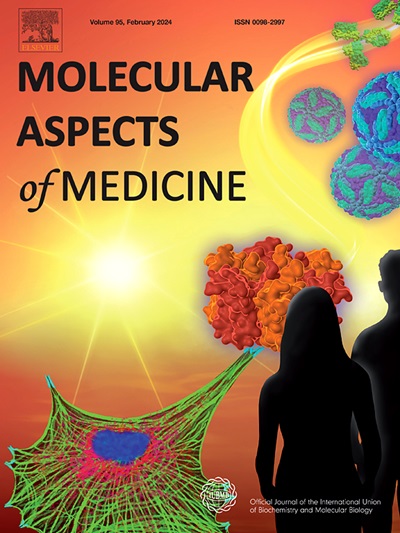Type 2 Diabetes Mellitus and bladder cancer: A narrative review on associated signaling pathways
IF 10.3
2区 医学
Q1 BIOCHEMISTRY & MOLECULAR BIOLOGY
引用次数: 0
Abstract
Bladder cancer is one of the most common cancers globally. The risk factors for urothelial bladder cancer can be broadly divided into genetic predispositions and external environmental exposures. Type 2 Diabetes Mellitus (T2DM) is a chronic, non-communicable metabolic disorder, and the interaction between genetic, behavioral, and environmental factors plays a significant role in its development. The management of T2DM includes lifestyle modifications and medication. Several studies suggest that T2DM is associated with an increased risk of bladder cancer. This review highlights the key signaling mechanisms involved in this association and explores the impact of T2DM medications on bladder cancer. In conclusion, the literature suggests that metabolic abnormalities associated with T2DM —such as hyperglycemia, insulin resistance and elevated levels of insulin, insulin-like growth factor 1 (IGF-1), inflammatory cytokines, iNOS/eNOS activity, hypoxia, dyslipidemia, matrix metalloproteinase (MMPs), leptin, vimentin, N-cadherin, fibronectin, advanced glycation end products (AGEs), endoplasmic reticulum stress (ERS), and Arntl2 gene expression; in addition to reduced E-cadherin, adiponectin, autophagy, and IGF-1 and Usp2 gene expression—significantly influence signaling pathways essential for bladder tumor development. Additionally, the choice of hypoglycemic treatment should be carefully considered, taking into account potential effects on carcinogenesis.
2型糖尿病和膀胱癌:相关信号通路的叙述综述
膀胱癌是全球最常见的癌症之一。尿路上皮性膀胱癌的危险因素大致可分为遗传易感性和外部环境暴露。2型糖尿病(T2DM)是一种慢性非传染性代谢性疾病,遗传、行为和环境因素的相互作用在其发病过程中起着重要作用。T2DM的管理包括生活方式的改变和药物治疗。一些研究表明,2型糖尿病与膀胱癌风险增加有关。这篇综述强调了这种关联的关键信号机制,并探讨了T2DM药物对膀胱癌的影响。总之,文献提示与T2DM相关的代谢异常,如高血糖、胰岛素抵抗和胰岛素水平升高、胰岛素样生长因子1 (IGF-1)、炎症因子、iNOS/eNOS活性、缺氧、血脂异常、基质金属蛋白酶(MMPs)、瘦素、vimentin、n-钙粘蛋白、纤维连接蛋白、晚期糖基化终产物(AGEs)、内质网应激(ERS)和Arntl2基因表达;除了e -钙粘蛋白、脂联素、自噬、IGF-1和Usp2基因表达减少外,还显著影响膀胱肿瘤发展所必需的信号通路。此外,应仔细考虑降糖治疗的选择,考虑到潜在的致癌作用。
本文章由计算机程序翻译,如有差异,请以英文原文为准。
求助全文
约1分钟内获得全文
求助全文
来源期刊

Molecular Aspects of Medicine
医学-生化与分子生物学
CiteScore
18.20
自引率
0.00%
发文量
85
审稿时长
55 days
期刊介绍:
Molecular Aspects of Medicine is a review journal that serves as an official publication of the International Union of Biochemistry and Molecular Biology. It caters to physicians and biomedical scientists and aims to bridge the gap between these two fields. The journal encourages practicing clinical scientists to contribute by providing extended reviews on the molecular aspects of a specific medical field. These articles are written in a way that appeals to both doctors who may struggle with basic science and basic scientists who may have limited awareness of clinical practice issues. The journal covers a wide range of medical topics to showcase the molecular insights gained from basic science and highlight the challenging problems that medicine presents to the scientific community.
 求助内容:
求助内容: 应助结果提醒方式:
应助结果提醒方式:


